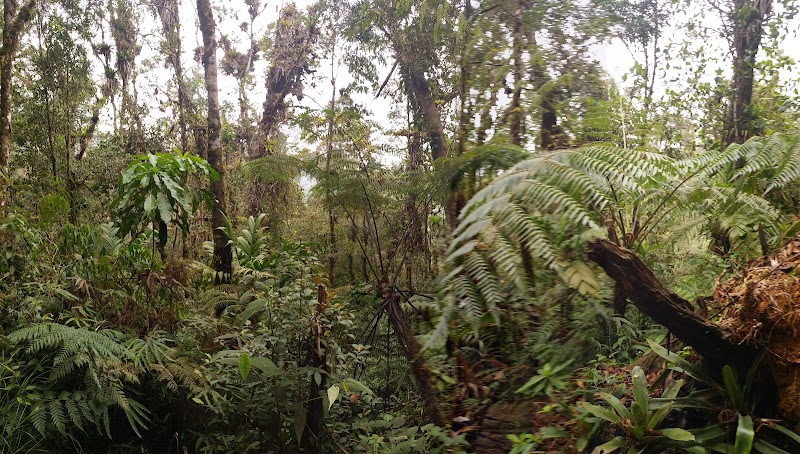Tracing Wings of Legend: Hiking Biotopo del Quetzal to Spot Guatemala’s Elusive Resplendent Quetzal
Explore the mist-laden trails of Biotopo del Quetzal in Guatemala, where every step through lush cloud forest brings you closer to catching a fleeting glimpse of the Resplendent Quetzal. This guide offers essential insights to plan a rewarding hike filled with vivid nature encounters and practical tips for a safe, immersive adventure.
Start Early to Catch the Quetzal’s Peak Activity
Bird activity is highest at dawn and early morning. Arriving early maximizes your chance to see the quetzal before it slips away into the forest canopy.
Wear Supportive Hiking Shoes With Good Traction
The trail is damp with moss and roots, making sections slippery especially during and after rain; stable footwear reduces risk of injury.
Bring Adequate Hydration and Snacks
Limited freshwater sources are available, so carrying at least two liters of water and energy-rich snacks keeps you fueled on the moderate trek.
Hire a Local Guide for Better Wildlife Spotting
Local guides bring knowledge of quetzal behavior and trail conditions, increasing your chances to see the bird and navigate safely.
Tracing Wings of Legend: Hiking Biotopo del Quetzal to Spot Guatemala’s Elusive Resplendent Quetzal
The Biotopo del Quetzal near Purulhá, Guatemala, is a sharp shake of emerald forest where the Resplendent Quetzal makes its home, elusive and fiercely independent. The trail stretches roughly 7 kilometers round-trip, climbing steadily through cloud forest between elevations of 1,800 to 2,400 meters—enough to awaken your senses and challenge your stamina without pushing beyond the reach of most hikers. Your boots will press into soft, damp earth and roots that twist like silent guardians beneath a canopy swaying with the breath of the wind. Leaf litter and moss cushion each step, while the forest seems to watch, alive with whispers and vibrant birdcalls.
Expect the trail to wind past streams that dare you closer, their currents pushing forward as if to urge exploration deeper into the Quetzal’s domain. The air here is thick—moist with mist and rich with the scent of wet wood and budding orchids. Early morning is the best time to head out; the forest wakes in a slow crescendo, and the quetzal’s secretive call sometimes filters through the fog, a quick flash of iridescent green and red in the dim light.
This hike requires moderate fitness—steady breathing and sure footing are your best allies. Trail markers are generally clear, but a local guide can transform the trek from a simple walk to a meaningful encounter. Along the path, keep your gaze sharp. The quetzal avoids crowds, but patience rewards those who listen and watch without rushing. Hydration matters here; water sources are limited and unfiltered, so carry at least 2 liters. Good hiking shoes with grip are essential: the soil can be slippery when moist, and tree roots demand attention.
Timing your visit during the early dry season (November to February) increases chances to catch clearer views and brighter skies. Rain can be unpredictable the rest of the year, turning trails slick and quiet. While the lure is the quetzal, your hike introduces you to a forest fiercely itself—alive with other birds, orchids pushing through mossy trunks, and brooks that dare you to listen closely. Respect these forces; take only photos, leave no trace, and tread lightly in a landscape that demands both admiration and care.
For the adventurer ready to engage with nature—not conquer it—the Biotopo del Quetzal offers a compact but intense adventure with a prize that’s as much about the journey as the rare glimpse of Guatemala’s national bird.
Nearby Trips
All Adventures
Boat Charters
Water Activities
Adventures near Purulhá
Discover the unique and memorable adventures that make Purulhá special.
Frequently Asked Questions
How long is the hike to see the Resplendent Quetzal in Biotopo del Quetzal?
The round-trip hike is approximately 7 kilometers (4.3 miles), generally taking between 3 to 4 hours depending on pace and stops for wildlife viewing.
Is it possible to see the quetzal year-round?
While the quetzal is present year-round, sightings are more common and reliable during the dry season from November to February due to better visibility and weather conditions.
Do I need a guide for the hike?
Though not mandatory, hiring a local guide is highly recommended. Guides provide valuable knowledge about the bird’s behavior, increase spotting chances, and enhance safety on less familiar trails.
What should I wear for the hike?
Opt for sturdy, waterproof hiking boots with good traction, layered clothing for variable temperatures, and a light rain jacket especially during the rainy season.
Are there any facilities at the trailhead or nearby?
Facilities are minimal; basic amenities may be found in nearby Purulhá. Bring your own water, snacks, and necessary supplies for the hike.
How do I get to Biotopo del Quetzal from Purulhá?
Biotopo del Quetzal is accessible by a short drive from Purulhá. Arrange local transport or a taxi for the 10-15 minute ride to the trailhead.
Recommended Gear
Sturdy waterproof hiking boots
Provides grip and ankle support on slippery, uneven terrain common in cloud forests.
Light rain jacket
Protects from sudden showers and keeps you comfortable in humid, wet conditions.
Binoculars
Enhances distant birdwatching, especially useful for spotting the quetzal high in the canopy.
Water bottle or hydration system
Necessary for staying hydrated along the moderately strenuous hike with limited natural water sources.
Local Insights
Hidden Gems
- "The Mira Blanca viewpoint offers sweeping views over the cloud forest canopy and valleys below—often missed by casual hikers."
- "Tiny endemic orchids bloom along lesser-used side trails, rewarding careful observers."
Wildlife
- "Besides the Resplendent Quetzal, keep an eye out for motmots, toucanets, and howler monkeys that call the forest home."
- "Amphibians such as colorful glass frogs become audible during wetter months."
History
"The Biotopo was established in the late 1990s as a protected area to safeguard cloud forest habitats and the globally significant Resplendent Quetzal population, a bird deeply woven into Guatemala’s cultural identity and mythology."

